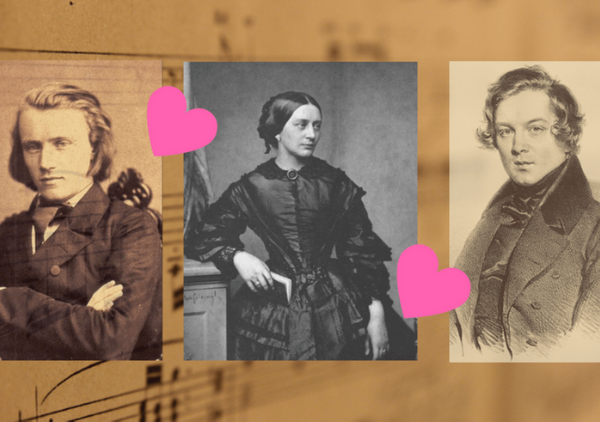Johannes Brahms (1833–1897) stands as one of the towering figures in classical music, celebrated for his deep, complex compositions that marry technical mastery with profound emotional depth. His oeuvre spans a range of genres, each revealing a different facet of his genius. Here, we explore ten of his most celebrated compositions, each a testament to his enduring legacy.
Johannes Brahms, one of the most significant composers of the Romantic era, was born on May 7, 1833, in Hamburg, Germany. His father, Johann Jakob Brahms, was a musician who played double bass, violin, and horn, while his mother, Johanna Henrika Christiane Nissen, was a seamstress. Brahms showed an early interest in music, and his father provided him with his first musical instruction.
Brahms's talent was evident from a young age, and he began performing publicly as a pianist by the age of 10. His skills as a performer soon caught the attention of Eduard Marxsen, a well-known pianist and composer, who became Brahms's mentor and provided him with thorough training in composition and music theory. Under Marxsen's guidance, Brahms developed a deep understanding of the classical forms and techniques of composers such as Bach, Beethoven, and Mozart, which would greatly influence his own compositions.
Johannes Brahms, one of the most celebrated composers in the history of classical music, was born on May 7, 1833, in Hamburg, Germany. He left an indelible mark on the world of music with his exquisite compositions and unique approach to classical forms. Here are ten interesting facts about this musical genius:
1. Musical Prodigy: Brahms displayed remarkable musical talent from an early age. He began playing the piano at the age of seven and quickly became proficient. By the time he was a teenager, he was already performing in public and earning money as a pianist.
Johannes Brahms, a prominent figure in the Romantic era, left an indelible mark on classical music with his rich harmonies, heartfelt melodies, and profound emotional depth. Born in 1833 in Hamburg, Germany, Brahms went on to become one of the most celebrated composers of his time. While his symphonies and chamber music are widely acclaimed, Brahms also composed a remarkable collection of songs that reveal his mastery of the art form. In this blog post, we delve into the world of Brahms' vocal music and present the top 10 songs that showcase his genius.
Johannes Brahms, one of the greatest composers of the Romantic era, left an indelible mark on the world of classical music. While he is widely celebrated for his symphonies, concertos, and chamber music, Brahms's artistry extended to vocal compositions as well. In this blog, we delve into the realm of Brahms's captivating songs and unveil seven of his finest masterpieces that showcase his immense talent and emotional depth.
Johannes Brahms, one of the most influential composers of the Romantic era, left an indelible mark on the world of classical music. His compositions exude a sense of passion, complexity, and emotional depth that have captivated audiences for generations. Beyond his musical genius, Brahms possessed a fascinating persona that adds another layer of intrigue to his legacy. Join us as we delve into the life of this enigmatic composer and explore some lesser-known curiosities about Johannes Brahms.
Clara Schumann, Robert Schumann, and Johannes Brahms are three of the most celebrated composers and pianists of the 19th century. Their musical talents and achievements are widely recognized and admired, but their personal lives are also full of drama and intrigue. In particular, the relationship between Clara, Robert, and Brahms has been the subject of much speculation and controversy, as they formed a complex and passionate love triangle that lasted for decades.
Johannes Brahms was one of the most influential composers of the Romantic era. He wrote symphonies, concertos, chamber music, piano works, choral compositions, and songs. He was also a virtuoso pianist and a music director. Here are seven facts about his life that you may not know.
Five Facts You Didn't Know About Brahms
1 - Something that was frequently ignored by early biographers of Brahms was what he did musically during his formative years. Coming from a very poor family, the young Johannes was sent to play piano at the local inns, brothels and taverns to supplement the family income. To make matters worse, the young Johannes, slight, blond and pretty, was made to witness sexual and violent acts which affected him badly.
#brahms
#classicalmusic
#orchestra
We are a educational channel specializing in history of classical music.
Our goal is to spread classical music to the greatest number of people.
Explore our channel and listen to more works by Mozart, Chopin, Beethoven, Tchaikovsky, Bach, Haydn, Schumann, Schubert, Vivaldi, Dvorak, Debussy and more! I hope you enjoy it and don't forget to Subscribe. 🎧
🔴 Facebook: https://www.facebook.com/TopClassicalMusic
🔴 WebSite: https://www.melhoresmusicasclassicas.com
Brahms - Short Biography
Widely considered one of the 19th century's greatest composers and one of the leading musicians of the Romantic era, Johannes Brahms was born May 7, 1833, in Hamburg, Germany.
He was the second of Johanna Henrika Christiane Nissen and Johann Jakob Brahms' three children. Music was introduced to his life at an early age. His father was a double bassist in the Hamburg Philharmonic Society, and the young Brahms began playing piano at the age of seven.
#classicalmusic
#brahms
#orchestra
We are a educational channel specializing in history of classical music.
Our goal is to spread classical music to the greatest number of people.
Explore our channel and listen to more works by Mozart, Chopin, Beethoven, Tchaikovsky, Bach, Haydn, Schumann, Schubert, Vivaldi, Dvorak, Debussy and more! I hope you enjoy it and don't forget to Subscribe. 🎧
🔴 Facebook: https://www.facebook.com/TopClassicalMusic
🔴 WebSite: https://www.melhoresmusicasclassicas.com




